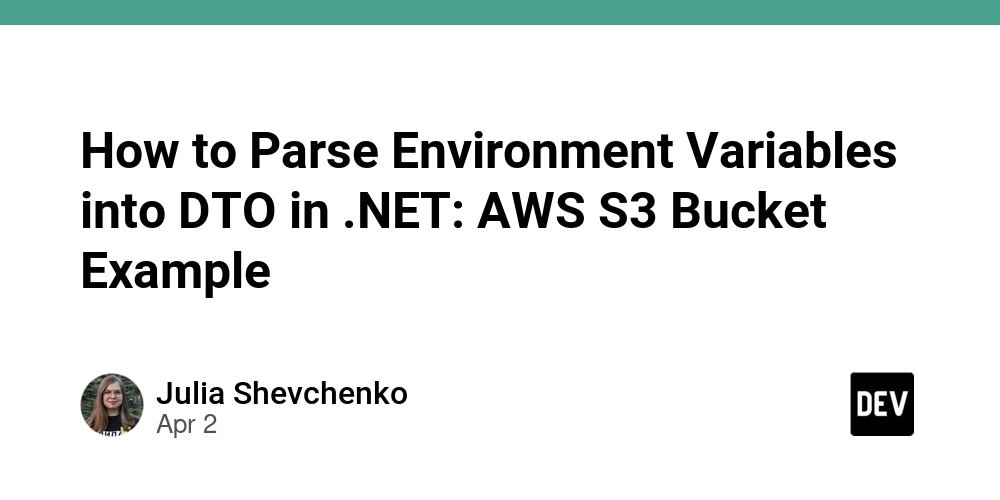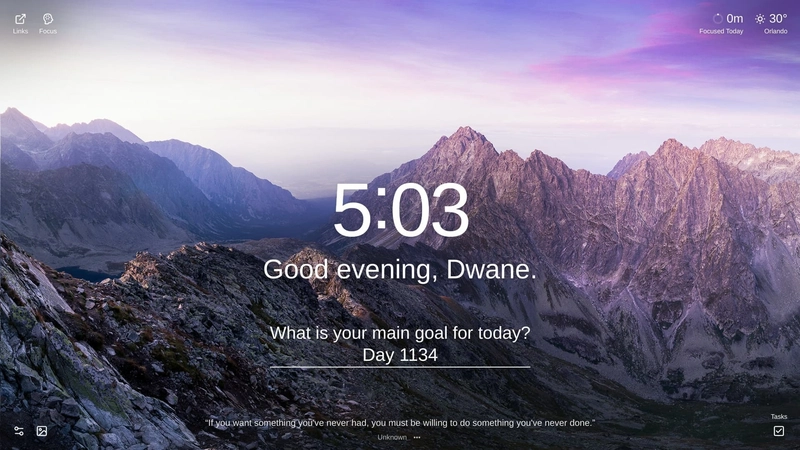How to Parse Environment Variables into DTO in .NET: AWS S3 Bucket Example
Working with objects is always better than with "magical" strings. Having multiple configuration strings for some services can be uncomfortable to work with. Also, it increases the number of parameters to pass to a service. If you add one more parameter to the configuration section, you will need to manually retrieve it from the configuration and pass it to the service, where it will be used. Treating configuration settings as a DTO class will make your code more readable. Parse config into DTO class As an example, I have a configuration for an AWS S3 bucket in appsettings.json "AwsS3": { "AccessKey": "your-access-key", "SecretKey": "your-secret-key", "BucketName": "your-bucket-name", "Region": "us-east-1" }, Let's create a DTO class for it: public class AwsS3Settings { public string AccessKey { get; set; } = string.Empty; public string SecretKey { get; set; } = string.Empty; public string BucketName { get; set; } = string.Empty; public string Region { get; set; } = string.Empty; } Now, it's time to configure the dependency injection container to store our configuration. This code reads the configuration section, maps it to the AwsS3Settings class, wraps it with IOptions, and adds it to the container as an IOptions. builder.Services.Configure sp.GetRequiredService().Value); Then, you will be able to inject the DTO directly to any service: public class AwsS3Saver(AwsS3Settings settings) Parse config into Record Usually, such data is treated using a record, not a plain class. However, the record cannot be used to map configurations into it in the same way. If you try, you will get an exception: System.MissingMethodException: Cannot dynamically create an instance of type 'EnvToDtoDemo.Settings.AwsS3SettingsRecord'. Reason: No parameterless constructor defined. The reason behind that is in IOptions, which requires parameterless constructor and set; for a public properties. Records use constructors with parameters and use them to initialize properties, so they can be set only during initialization, which makes them immutable. However, you still can use records for parsing environment variables, but with a slightly different approach. Use Get extension method to map configuration to a strongly typed object, which is our AwsS3SettingsRecord. After that, add it to the container. public record AwsS3SettingsRecord(string AccessKey, string SecretKey, string BucketName, string Region); var awsS3SettingsRecord = builder.Configuration.GetSection("AwsS3").Get() ?? throw new InvalidOperationException("AwsS3 settings are missing!"); builder.Services.AddSingleton(awsS3SettingsRecord); That's it! Now you can inject the record with configuration where needed.

Working with objects is always better than with "magical" strings. Having multiple configuration strings for some services can be uncomfortable to work with. Also, it increases the number of parameters to pass to a service. If you add one more parameter to the configuration section, you will need to manually retrieve it from the configuration and pass it to the service, where it will be used.
Treating configuration settings as a DTO class will make your code more readable.
Parse config into DTO class
As an example, I have a configuration for an AWS S3 bucket in appsettings.json
"AwsS3": {
"AccessKey": "your-access-key",
"SecretKey": "your-secret-key",
"BucketName": "your-bucket-name",
"Region": "us-east-1"
},
Let's create a DTO class for it:
public class AwsS3Settings
{
public string AccessKey { get; set; } = string.Empty;
public string SecretKey { get; set; } = string.Empty;
public string BucketName { get; set; } = string.Empty;
public string Region { get; set; } = string.Empty;
}
Now, it's time to configure the dependency injection container to store our configuration. This code reads the configuration section, maps it to the AwsS3Settings class, wraps it with IOptions, and adds it to the container as an IOptions.
builder.Services.Configure<AwsS3Settings(builder.Configuration.GetSection("AwsS3"));
It means now it is possible to inject it in some service like this:
public class AwsS3Saver(IOptions<AwsS3Settings> settings
If you want to inject your configuration DTO directly, without IOptions cover, you can register it as a Singleton in the container.
builder.Services.AddSingleton(sp => sp.GetRequiredService<IOptions<AwsS3Settings>>().Value);
Then, you will be able to inject the DTO directly to any service:
public class AwsS3Saver(AwsS3Settings settings)
Parse config into Record
Usually, such data is treated using a record, not a plain class. However, the record cannot be used to map configurations into it in the same way. If you try, you will get an exception: System.MissingMethodException: Cannot dynamically create an instance of type 'EnvToDtoDemo.Settings.AwsS3SettingsRecord'. Reason: No parameterless constructor defined.
The reason behind that is in IOptions, which requires parameterless constructor and set; for a public properties.
Records use constructors with parameters and use them to initialize properties, so they can be set only during initialization, which makes them immutable.
However, you still can use records for parsing environment variables, but with a slightly different approach. Use Get extension method to map configuration to a strongly typed object, which is our AwsS3SettingsRecord. After that, add it to the container.
public record AwsS3SettingsRecord(string AccessKey, string SecretKey, string BucketName, string Region);
var awsS3SettingsRecord = builder.Configuration.GetSection("AwsS3").Get<AwsS3SettingsRecord>()
?? throw new InvalidOperationException("AwsS3 settings are missing!");
builder.Services.AddSingleton(awsS3SettingsRecord);
That's it! Now you can inject the record with configuration where needed.










![From drop-out to software architect with Jason Lengstorf [Podcast #167]](https://cdn.hashnode.com/res/hashnode/image/upload/v1743796461357/f3d19cd7-e6f5-4d7c-8bfc-eb974bc8da68.png?#)






























































